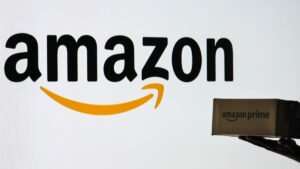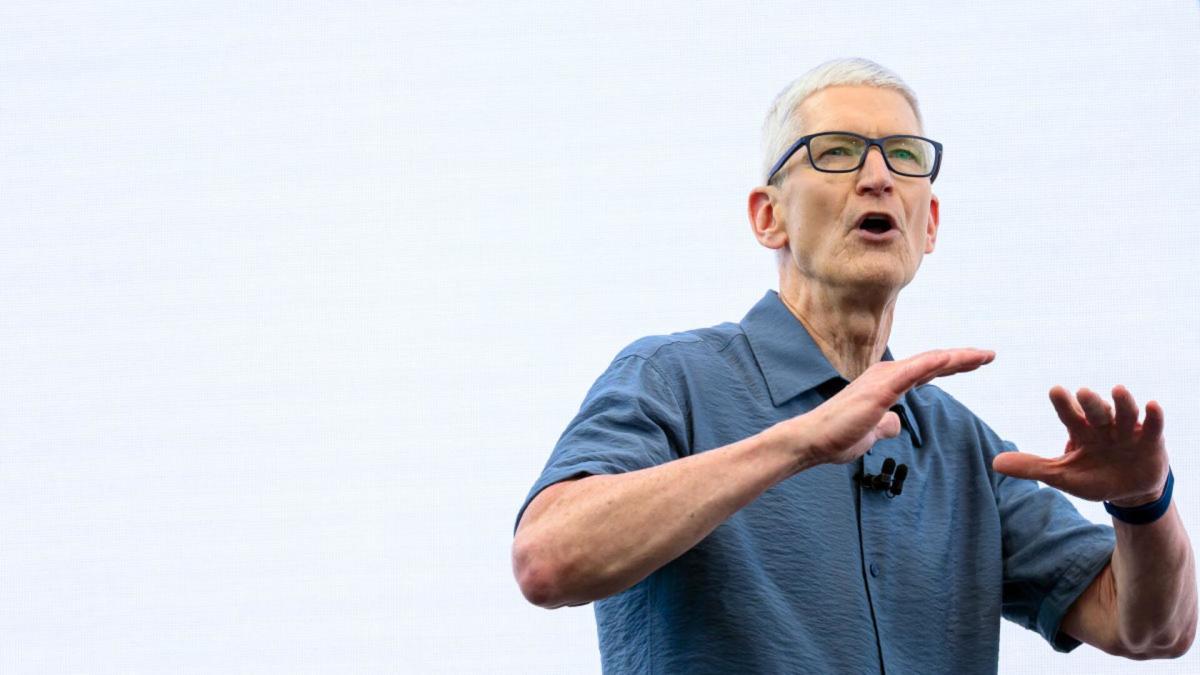The smartphone market hasn’t seen many significant changes over the past decade. As a result, many are content sticking with their older Apple iPhones rather than upgrading to the latest models for what amounts to tweaks rather than overhauls.
That’s a big problem for Apple, because it means fewer iPhone sales and the risk of losing market share to rivals, including Samsung.
According to data from Telemetry, the most commonly owned iPhone is the iPhone 13, representing 16.3% of all iPhones in use.
That’s pretty telling, given that Apple releases new iPhones annually and the iPhone 13 was launched in 2021.
JOSH EDELSON/Getty Images
Samsung grabs market share from Apple
Given the latest data from Canalys/Omdia on the US smartphone market share, Samsung’s phones may have an innovation edge that’s winning over more people.
Samsung has launched foldable and flippable phones over the past few years, including its highly-rated Samsung Galaxy Z Fold 7 and Samsung Galaxy Flip 7.
Related: Top analyst sends Apple CEO bold message about its future
Based on second-quarter smartphone shipment data, those phones may be helping it chip away at Apple’s market share.
While Apple iPhone shipments declined 2% year over year to 44.8 million units in the second quarter of 2025, Samsung shipments swelled 7% to 57.5 million phones.
As a result, Apple’s market share was flat at 16% while Samsung’s rose 1% to 20% year over year.
The global market share for the top five smartphone makers, according to Canalys/Omdia:
- Samsung: 20%
- Apple: 16%
- Xiaomi: 15%
- vivo: 9%
- TRANSSION: 9%
“Many vendors are betting on a hectic launch season in Q3, focusing on topics such as AI, foldables and slimness, to reboot demand ahead of the holiday shopping season toward the end of the year,” noted Sheng Win Chow, Senior Analyst at Canalys/Omdia.
“Samsung has refocused its strategy on ‘smart volume,’ aiming to profitably scale its mass market Galaxy A series while continuing to grow its premium models,” said Aaron West, Senior Analyst at Omdia.
More Tech Stocks:
- Analyst reboots SoFi Technologies price target after capital raise
- Amazon makes surprising decision to cut losses on recent deal
- Apple makes $100 billion genius move to skirt huge problem
IDC agrees that Samsung also has an advantage in offering a wider selection of smartphones at more price points, including its Galaxy A-series of phones, which aren’t as high-end as its S-series, but are less expensive.
For example, the current A36 is much less expensive than the current S35 (the S36 is anticipated in 2026).
- Samsung A36 is $399.99
- Samsung S35 is $799.99
“Samsung was able to consolidate its market leadership and outperform the overall market, achieving strong growth in the quarter driven by the sales of its new Galaxy A36 and A56 products,” said Francisco Jeronimo, vice president, Client Devices, IDC. “These new products introduce AI-enabled features to mid-range devices, which has been effectively used in retail stores to drive sales, as more consumers become curious about AI.”
Apple may have an iPhone problem
Apple founder Steve Jobs was legendary for his “one more thing” product reveals at conferences. He oversaw a tremendous period of innovation at Apple that included the launch of the iPod, iPhone, and iPad.
Since CEO Tim Cook took over, the company has made fewer big splashes, instead focusing on tweaks like better cameras rather than major overhauls.
Related: Apple faces Musk’s wrath in explosive AI bias allegations
For instance, commonly considered major iPhone launches include the iPhone 6 in 2014, which had a larger screen, and the iPhone X, which had an edge-to-edge display.
Certainly, there have been changes under the hood with more powerful chips, but nothing has changed dramatically enough to cause a massive rush by Apple loyalists to upgrade.
The seeming lack of innovation contradicts Apple’s long-time reputation for reshaping design and how consumers use and interact with their devices.
This is most evident in the fact that Apple’s iPhone looks largely similar to prior generations, and the company has yet to launch a foldable display like Samsung’s.
It’s also evident in Apple Intelligence’s features, which pale when compared to Google’s Gemini, found in Samsung smartphones running on Android. Or rival AI chatbots like OpenAI’s ChatGPT or Anthropic’s Claude.
Will Apple (finally) launch breakthroughs in 2026?
Cook is more than aware of the perception that Apple is behind the curve in AI and smartphones.
Recently, rumors swirled that Cook may open Apple’s substantial pockets to make a splashy AI acquisition. Most reports focused on Perplexity, a top-five AI chatbot by market share that launched in 2022 around the same time as ChatGPT, and is run by CEO Aravind Srinivas, formerly of Google’s DeepMind and OpenAI.
Related: Surprising Google Chrome bid upends Apple AI rumors
However, Perplexity may have squashed those rumors last week when it made an unsolicited $34.5 billion bid for the Google Chrome browser.
Google is the defendant in a Department of Justice antitrust trial, and some believe it will be forced to jetison its Chrome browser to satisfy monopoly concerns.
The size of Perplexity’s bid suggests that it would be too pricey for Apple, which has largely focused on small, bolt-on acquisitions. Its largest acquisition was Beats for $3 billion in 2014. Perplexity would likely cost tens of billions of dollars more.
While the odds of big M&A have fallen, there’s hope that we could see major product unveilings in 2026.
Among the possible launches being discussed:
- A more robust AI Chatbot version of Siri for iPhones.
- An AI-powered desktop ‘Robot’ with a display and arm.
- A newly designed Apple Watch with more health-monitoring.
Related: Nvidia quietly buys more stock in AI infrastructure favorite


















